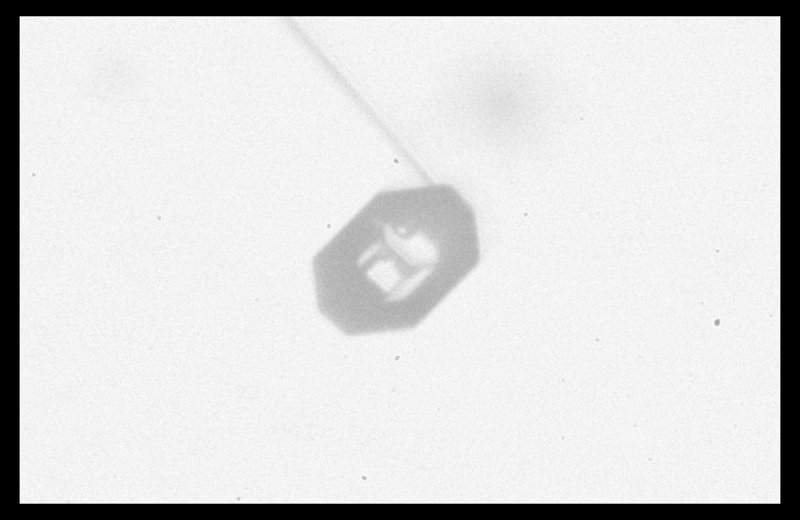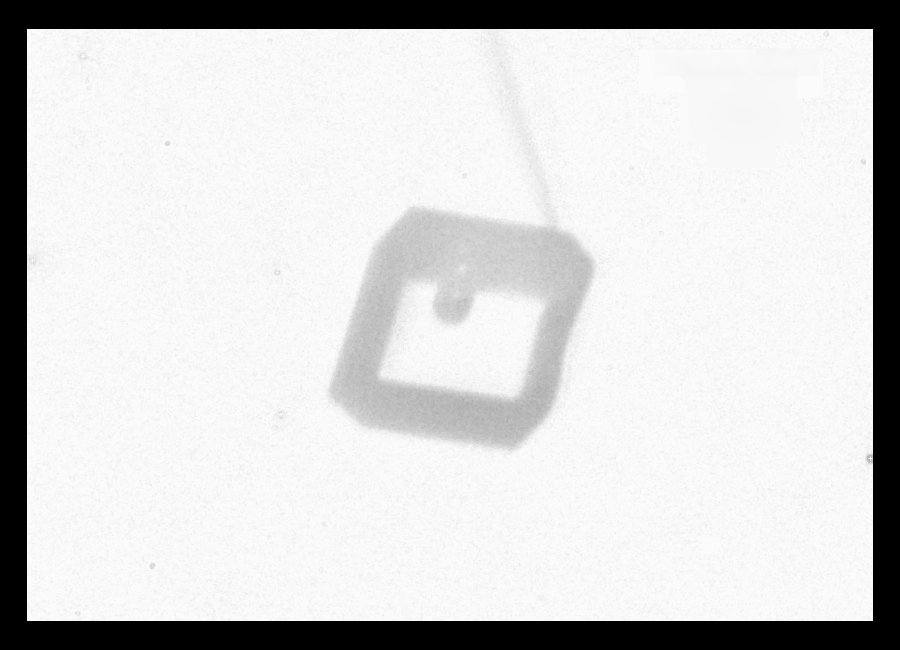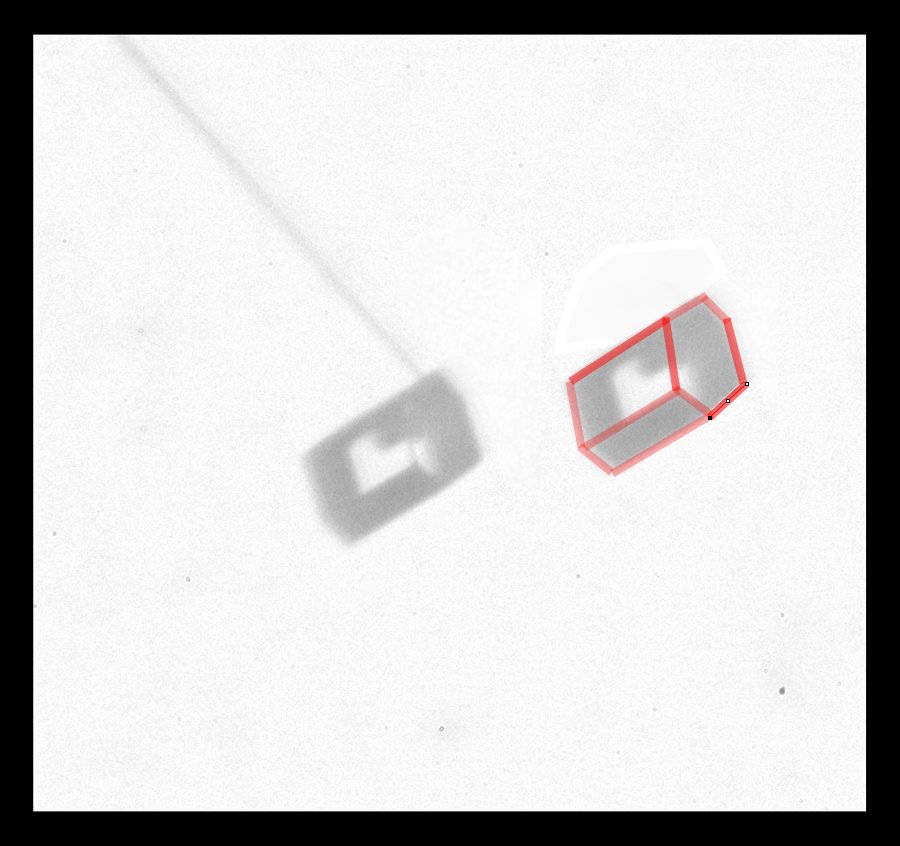| « Lots of Hair Ice | New Capillary Crystal-Growth Device » |
A Crystal Pair, Several Views, and a "Man on the Crystal"
One advantage of the new apparatus is the capability to grow up to three crystals at a time, each on its own capillary. It is also very useful being able to move each capillary around. Having success with a single crystal, we tried it with two, and much thinner, capillaries.
This time, we had to cool the apparatus down to about -38.5 C before they appeared (previous cases were about -20 C), and to my surprise, they both appeared at about the same time. (Polycrystalline blobs, as are more common at these low temperatures.) Due to some troubles we were having with the vacuum (later discovered to be simply a case of the pump getting shut off), we warmed the crystals up to -17 C, sublimated them, and regrew them.
The capillaries slide up-down on axes that intersect, designed this way so we can bring the crystals nearer or further apart. For the above image, they were relatively close. The crystal on the left is a thin plate, whereas the one on the right appears to be a short column. Both grew under the same conditions, but grew into different forms.
On closer look, the rightmost crystal revealed itself to be more interesting than initially thought:
The apparent "man in the crystal" (i.e., face, as in the "man on the moon") shown in the view above arises from dark lines, which are due to face-face edges on the other side of the crystal, a horizontal "terrace", also on the other side, plus an air pocket inside the crystal.
Also, the crystal appears to be eight-sided around the perimeter, but this is again an illusion due to perspective. Rotating the crystal around the main capillary axis instead suggests a four-sided form:
Whereas another rotation suggests a common hexagonal prism:
The horizonal extent of the crystal is about 150 micro-meters (microns). The view above clearly shows the interior air pocket. Also, on the right, you can see the profile of the "terrace" mentioned above.
Another rotation, giving another view, helps to clear up the mystery of the 3-D crystal shape:
The crystal is a short hexagonal column, but two opposite prismatic faces are much larger than the other four (because they grew much slower). I copied the crystal image at right and outlined the crystal edges in red. This shape of crystal is thought to give rise to one of the "Parry arcs" in the sky, which I showed in an earlier post.
Another interesting thing about this crystal is its very weak attachment to the capillary. The molecular forces holding it up were so weak that torques arising from the pull of gravity would cause the crystal to slowly rotate downward. In general though, these cases show how useful it is to be able to move and rotate the crystals.
--JN




